How One Designer Turned 8 Tonnes of Ceramic Waste Into Eco-Friendly Products We Can Use
The world is teeming with waste, and one of the growing offenders is ceramic. Although it’s popular for its durability, this material does not biodegrade. Once discarded, it can sit in landfills for centuries. The industry’s waste problem has only worsened with the increasing demand for ceramic products.
Yet, amidst the growing pile of discarded ceramics, one young designer saw an opportunity not just to change how we think about waste but to modify it into something useful.
Shashank Nimkar, a National Institute of Design (NID) graduate, has spent the past few years doing just that. Through his startup, Earth Tatva, he has turned ceramic waste into a versatile material that is being used by artists, architects, and designers.
His story to establish this resourceful venture is as much about environmental consciousness as it is about design, creativity, and problem-solving.
For the 32-year-old, the idea of recycling ceramic waste didn’t come overnight, it was a slow discovery. After completing his undergraduate degree in animation film design from Symbiosis Institute of Design in Pune, he worked as a freelancer for a couple of years in the advertising industry.
 When Shashank visited the ceramic manufacturing hub of Khurja in Uttar Pradesh in 2017, he was disturbed by the amount of ceramic waste
When Shashank visited the ceramic manufacturing hub of Khurja in Uttar Pradesh in 2017, he was disturbed by the amount of ceramic waste
But his real turning point came when he pursued his master’s in industrial design at NID, Ahmedabad, where he specialised in ceramic and glass design. It was during a trip to the ceramic manufacturing hub of Khurja in Uttar Pradesh in 2017 that the entrepreneur had the “aha” moment that would set his future on an entirely new path.
“We were walking around the streets, visiting factories, and I noticed an alarming sight where ceramic waste was dumped everywhere. I spoke to different industrialists and realised ceramics would never biodegrade. This waste was here to stay, long after we were gone,” he tells The Better India.
From classroom to startup: How NID led to a scalable idea
‘Why are we here as designers?’ This was the first question Shashank had after seeing the piles of ceramic garbage.
He explains further, “Every new season, new colours, new shapes, new collections, we are just adding to this burden without doing anything to the existing ceramic.” This moment of realisation spurred the student to dig deeper into the issue of ceramic waste, and from that, Earth Tatva was born.
Shashank’s master’s project at NID soon became his launchpad for solving this problem. He says, “At NID, I had the resources, the access to mentorship, and the infrastructure to begin experimenting. My initial research started with looking at what others around the world were doing with ceramic waste. There were a few isolated efforts, but no one had a universal process for recycling ceramic materials.”
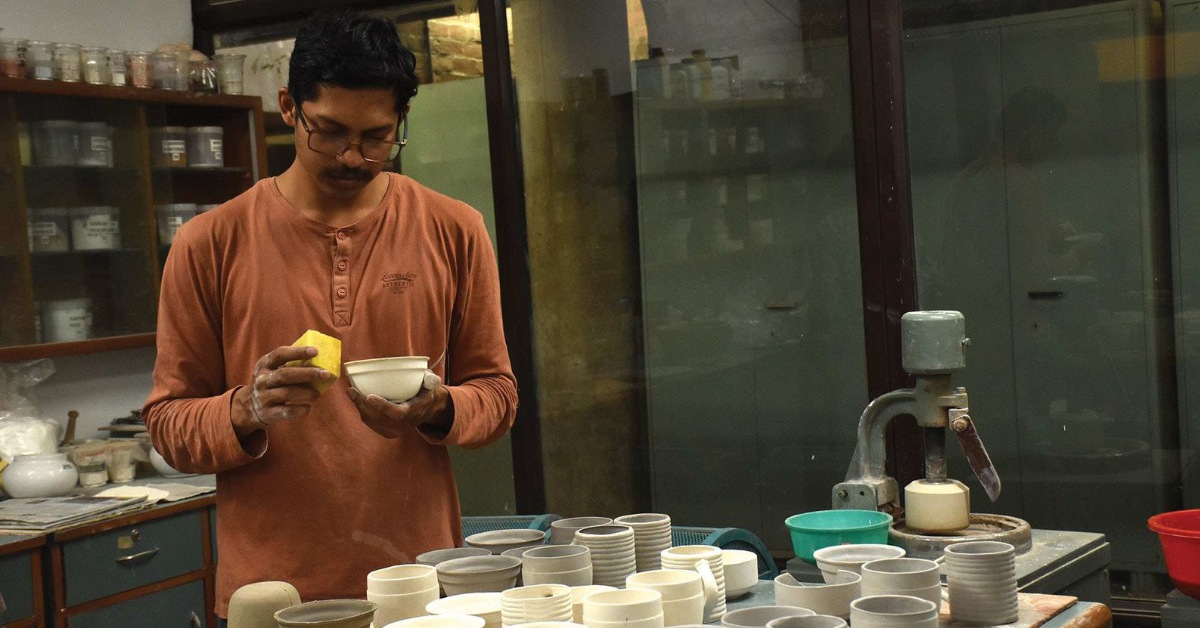 Shashank’s initial research started with looking at what others around the world were doing with ceramic waste
Shashank’s initial research started with looking at what others around the world were doing with ceramic waste
Inspired by a successful pilot project in Japan in the late 1990s, he began experimenting with turning ceramic waste into something usable. “The Japanese project used up to 50% recycled ceramic content, and that caught my attention,” he says. “This was the benchmark for my research.”
The challenge, however, was not just restricted to finding a way to recycle ceramic; he had to face certain technical obstacles too. “The key was finding the right binder. Most recycled ceramics use cement or resin, but those are not sustainable in the long run because they can’t be separated from the ceramic when it’s eventually discarded,” he explains.
“I wanted to use something that could allow us to create a product that’s both recyclable and durable. That’s when I realised that clay, a natural binder, could be the solution.”
By the end of 2018, during his research for the project, Shashank had figured out a way to combine recycled ceramic waste with his proprietary clay binder. The breakthrough came with the slip casting process, which is a method that uses a liquid mixture of recycled ceramic and clay to create a solid form.
“After a lot of testing, we found that we could use up to 70% recycled ceramic in our casting mix. It was a huge step forward,” he reflects.
The art of recycling ceramics: From waste to resource
But just as things were beginning to come together, the COVID-19 pandemic hit, halting progress for a while. However, the forced pause allowed the entrepreneur to focus on securing funds and launching his startup.
“I applied for a Government of Gujarat grant for startups, and by the end of 2020, we were approved for Rs 20 lakh grant,” he says. “That gave us the boost we needed to start commercial operations in 2021.”
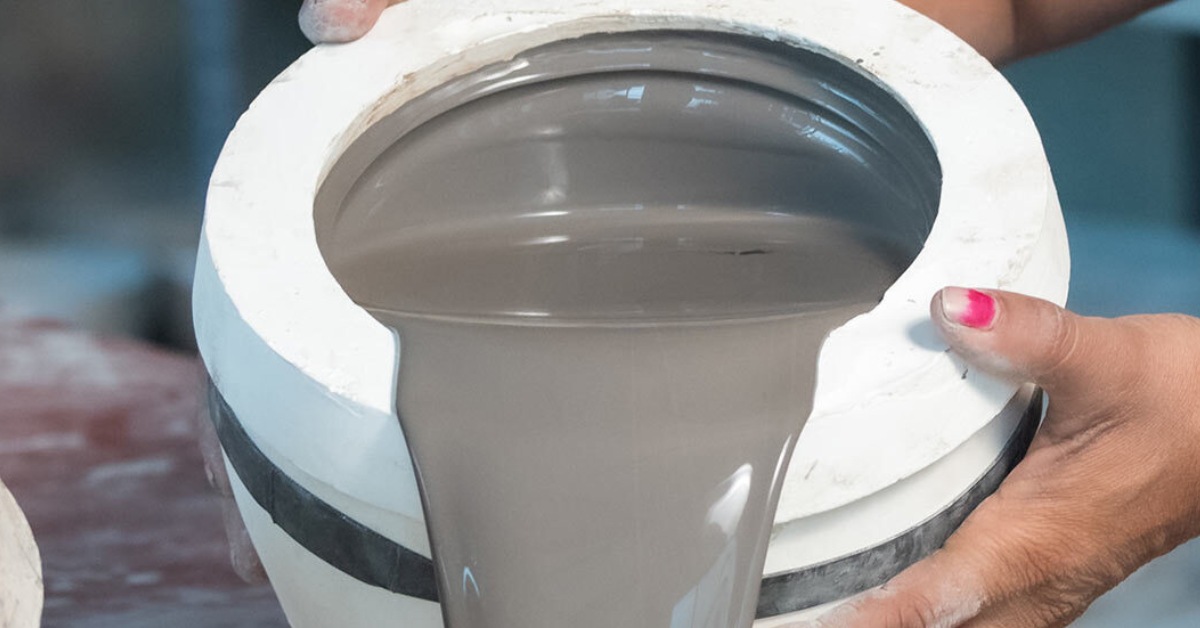 Earth Tatva started its commercial operations in 2021
Earth Tatva started its commercial operations in 2021
The process of turning ceramic waste into something usable is complex, yet the 32-year-old has managed to create a sustainable system that can be scaled. “The process starts by sourcing post-industrial ceramic waste from factories in Gujarat, specifically in Morbi and Thangadh, where the waste is pulverised into a fine powder. We mix 60% pulverised ceramic waste with 40% of our specially designed clay binder,” he explains.
“The mixture is processed using a ball mill, which helps blend everything thoroughly. For products like mugs and partitions, the next step is slip casting, where the liquid mixture is poured into moulds and allowed to solidify. Alternatively, when creating dough-like material for pottery, the mixture is dewatered using a filter press and then passed through a pug mill to ensure uniform consistency. This mixture is named Tatva mix,” he adds.
Once the desired consistency is achieved, Tatva Mix can be used by artists and designers to create various products, from food bowls to tiles.
Creating a product from recycled material can be arduous, especially if you try it out for the first time. “One of the first hurdles we faced was cracking the clay moulds,” the entrepreneur admits. “It took us nearly a year of testing, tweaking the composition, and adjusting the manufacturing process before we found the right balance.”
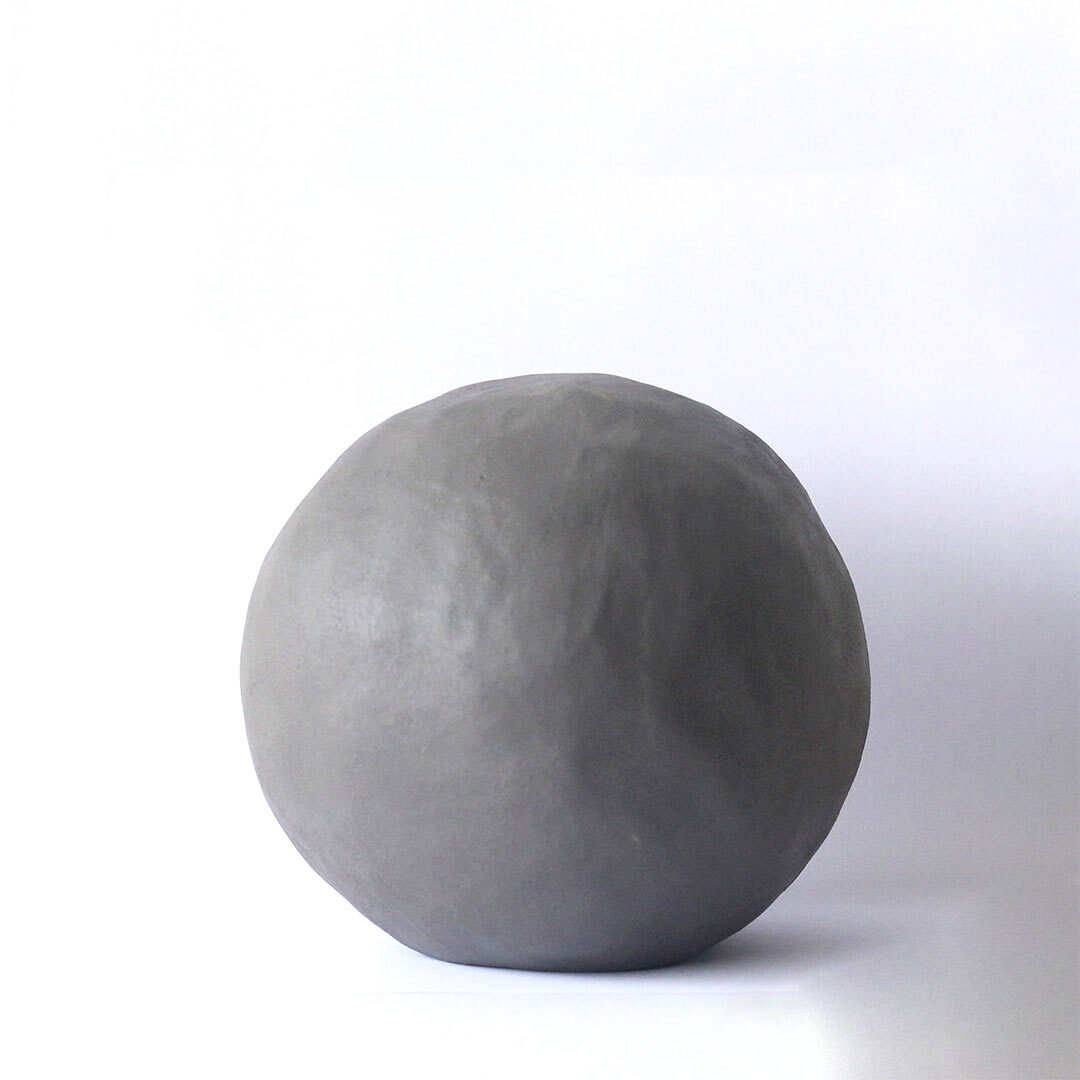 The Earth Tatva mix is being used by studio potters, artists, and architects to create functional and artistic pieces
The Earth Tatva mix is being used by studio potters, artists, and architects to create functional and artistic pieces
Another challenge he faced was educating consumers about the complexities of recycling ceramic waste. “There is a common misconception that ceramic or clay products are inherently eco-friendly. While it is true that ceramics are made from natural materials, the process of creating them is not energy-efficient. Firing ceramics at high temperatures requires a massive amount of energy, which makes their production quite resource-intensive,” he explains.
No large-scale machinery, only hand-made pieces
The startup is operating on a smaller and more sustainable scale. “We are working at a studio level,” he says. “Each piece is handmade, and we don’t rely on large-scale machinery or an extensive workforce.”
This approach guarantees that every product is carefully crafted, which not only reduces the reliance on heavy industrial processes but also keeps the energy consumption lower compared to mass-produced ceramics.
Kanzariya Ankit, Technical Material Manager at Earth Tatva, shares, “I joined Earth Tatva in July 2023. My role primarily focuses on developing new compositions for recycled ceramic bodies and testing various glazes and colours.”
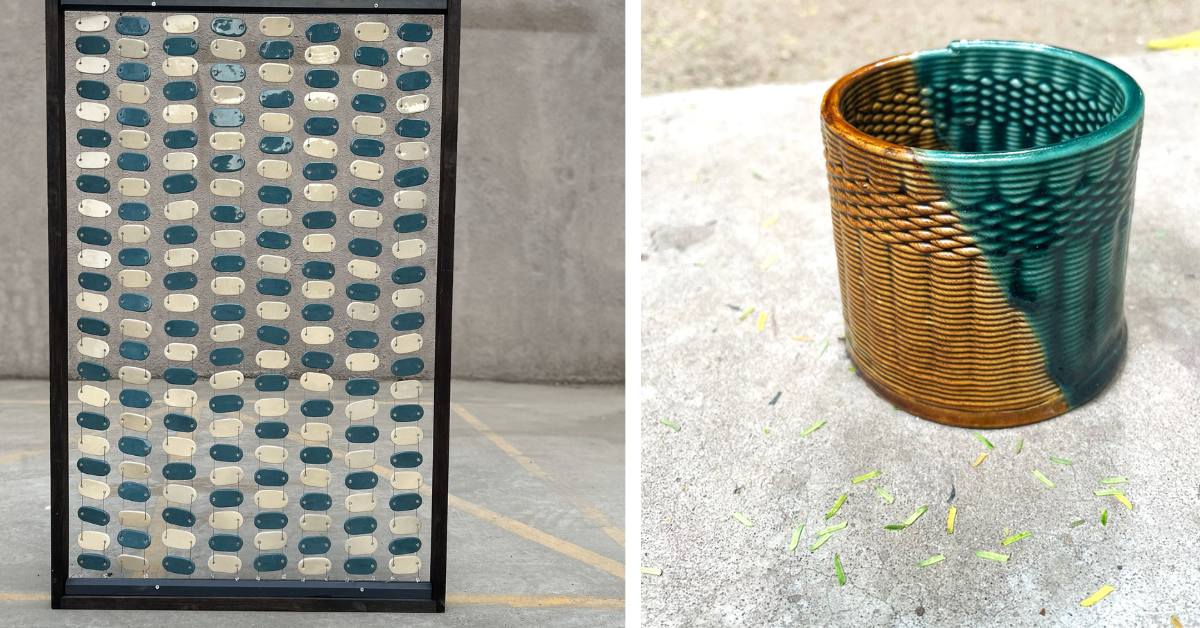 The entrepreneur uses recycled ceramic waste to make products like partitions and mosaic tiles
The entrepreneur uses recycled ceramic waste to make products like partitions and mosaic tiles
Reflecting on his experience as a member of the R&D Department, Kanzariya says, “An important part of my responsibilities is testing recycled ceramic products to ensure they maintain the highest quality standards. Recently, we have introduced new recycled ceramic products like mosaic tiles and partitions, designed to promote sustainability in the construction industry. By recycling up to 60% of ceramic waste, we are significantly reducing the need for raw material extraction, which helps conserve natural resources.”
“It was important to me that this was not just about making a recycled product. It had to be a material that could be used in real-world design, whether for pottery, art, or architecture,” Shashank adds.
Waste not, want not: How Earth Tatva is reducing landfill waste
By recycling ceramic waste, the company has diverted around eight tonnes of waste from landfills, saving an estimated 450-500 kg of carbon emissions. This focus on sustainability is not just reflected in the products but also the company’s operations.
“We fire our products at the right temperature, at around 1200°C, looking after durability without compromising on energy efficiency,” Shashank explains. “We also use natural gas instead of electricity for firing, which reduces the carbon footprint.”
Earth Tatva’s impact extends to its customers as well. The Earth Tatva mix is being used by studio potters, artists, and architects to create functional and artistic pieces with a smaller environmental footprint.
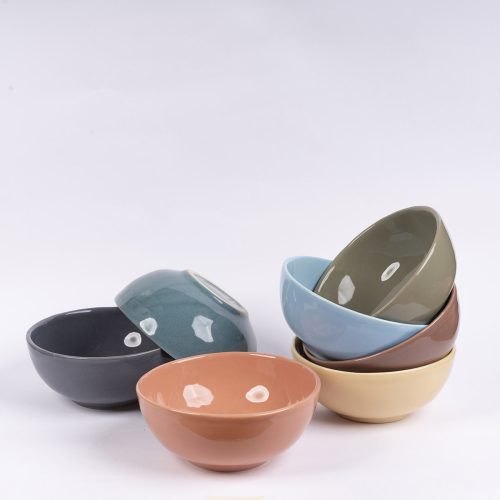 The startup also makes food-safe ceramic bowls from recycled waste
The startup also makes food-safe ceramic bowls from recycled waste
For example, the company’s unique partitions, made from recycled ceramic, can be used on both sides and are designed to be easily dismantled, making them fully circular at the end of their life cycle.
Dhruva Patel, founder of Studio WildFlower, a business that specialises in selling hand-painted ceramic products, says, “For the past two years, we have been sourcing materials from Earth Tatva. What initially caught my attention was the startup’s process of changing ceramic waste into functional and aesthetic products. The idea of reducing landfill waste while still maintaining the elegance and durability of ceramics stood out to me,” he explains.
“I believe in supporting brands that contribute to a healthier planet. They are reshaping how we think about waste and resources,” he adds.
As the world increasingly faces environmental challenges, Shashank’s journey offers a glimpse into how design and innovation can offer real solutions. “I always knew I wanted to create something meaningful through design,” he reflects. “Through Earth Tatva, I feel like I am contributing to a future where waste isn’t seen as a problem but as a resource.”
Edited by Vidya Gowri; All pictures courtesy Shashank Nimkar
News